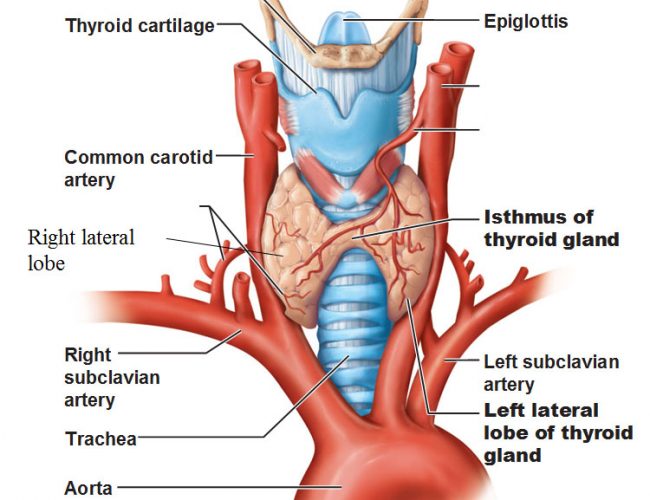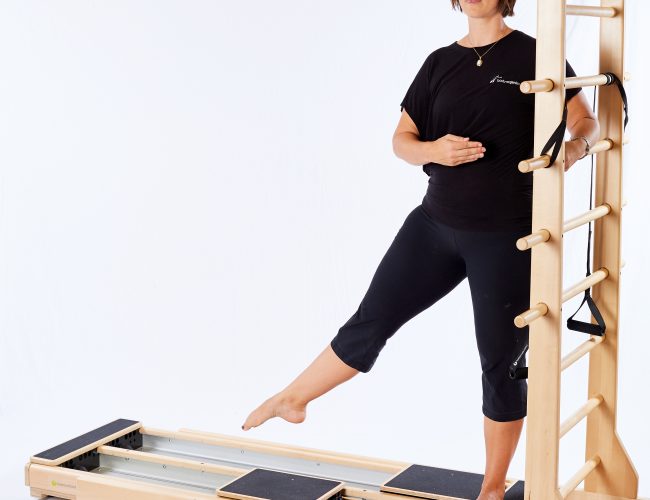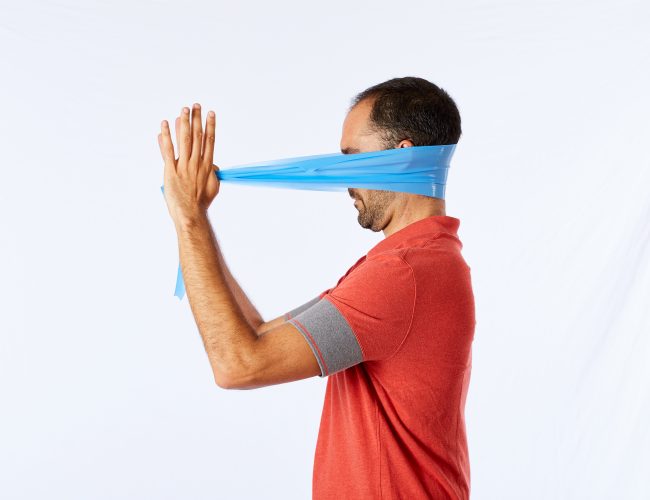Hashimoto’s disease – and pilates
Wed,Mar 11, 2020 at 08:48AM by Carla Mullins
Hashimoto’s Disease is now considered the most common Autoimmune diseases and affects the thyroid gland. (Beynon, & Pinneri, 2016). It is a disease that I have, and it took years for me to be taken seriously and receive a proper diagnosis. During that time, my health deteriorated dramatically, and even now I struggle to get a doctor to properly review and consider how the disease and its symptoms impacts on my quality of life.
In this article I will explore
// the anatomy of the thyroid
// the physiology of the thryoid hormones
// what is Hasmimoto’s disease
// how the disease affects movement
// some movement ideas for clients and a studio.
What is the thyroid?
The thyroid is a butterfly shaped organ located in your throat and sits around your trachea. Whilst small this organ plays an essential role in the production and maintenance of hormones associated with metabolism and calcium homeostasis. The thyroid works in conjunction with the anterior pituatory and as such helps with the regulation of metabolism, protein synthesis and growth hormone.
The anterior pituitary is located in your brain, and is a major part of our hormone systems. The pituitary produces a substance called thyroid stimulating hormone (TSH) when the thyroid hormone levels are too low in the body. The idea is that the anterior pituitary and thyroid are working in a constant feedback loop to create balances in the three main hormones of the thyroid.

Thyroid gland
What are thyroid hormones?
There are three main hormones associated with the thyroid:
// Triiodothyronine (T3) – this hormone is essential in metabolism, growth, temperature regulation and even heart rate.
// Thyroxine (T4) – this hormone is produced by the thyroid and then broken down into T3 by our organs.
// Calcitonin – this hormone regulates calcium rates in the body.
As you can see these hormones are pretty important for bone, muscle nerve function.
What is Hashimoto’s disease?
Hashimoto’s disease is an autoimmune disease in which the body starts to destroy the tissues of the thyroid leading to imbalances of the thyroid producing hormones. The changes mean that the thyroid enlarges but cannot produce sufficient hormones. Why the disease occurs is not fully understood but it is known that it has a high correlation with celiac disease and has genetic links.
What are the symptoms of Hashimoto’s disease
// rapid weight gain
// loss of hair
// intolerance to cold
// poor memory
// tiredness
// swelling of face and limbs from a fluid build up
// nerve problems eg carpel tunnel
// slowed heart beat
// slowed movements and reflexes
// bone density problems
The disease is normally identified through blood tests and it is important to work with an endocrinologist to ensure the correct hormone balance is achieved and restored.
What about diet?
Diet does play an important role in Hashimoto’s disease, with a significant amount of people with the disease also having celiac disease.
Other important nutritional aspects of diet and thyroid include iodine and goitrogenic foods, see table below. Essentially the thyroid requires iodine for the production of thyroid hormones. Iodine is found in seafood and its absence has been noted as contributing to a number of diseases eg cretinism.
Accordingly, working with a good naturopath, dietitian or nutritionist is important to help people with Hashimoto’s disease. The table below, details a lot about various foods and I don’t expect you to fully understand the actions. However, it highlights how important it is for you to talk to an expert about these foods and a balanced diet as they do affect thyroid function, and are not often part of a discussion with your local GP.
| Natural substances | Action |
| Millet, soy | impairs thyropreroxidase activity |
| Cassava, sweet potato, sorghum | inhibits iodinethryoidal uptake |
| Babussu conconut, mandioca | inhibits thyroperoxidase |
| cruciferous vegetables, cabbage, cauliflower, brocoli, turnips, canola | impairs iodine, throidal uptake |
| Seaweed (kelp) | inhibits release of throidal hormones |
| malnutrition | increasesTSH stimulation |
| iron deficiency | reduces heme-dependent thyroperoxidase thyrodial activity |
How does Hashimoto’s disease affects movement?
Factors that need to be considered when working with a client with Hashimoto’s disease:
// Memory is impaired and so clients can forget appointments, exercises or activities. These clients might need to have written notes or electronic reminders to help keep them organised. Be patient with them about not remembering the order of exercises, gently prompt them or give them a list as a reminder. Important aspects of memory and learning as well as strategies are discussed in more detail in the online course Introduction to Neuroanatomy
// Hypothyroidism is associated with impaired blood flow to skeletal muscle under whole body exercise conditions. It is unclear whether poor cardiac and/or vascular function account for blunted muscle blood flow.(Bausch & McAllister 2002). This means that muscle power and tendon reflex responses are also very slow. It is not simply a matter of making the person work harder, because if you overload them they are more likely to injure themselves because they are lacking coordination and control. Remember to take things slow and pace the person to their abilities as they build strength and as the thyroid returns to regulation they will get stronger. Just remember not to undermine the person’s self efficacy whilst they are seeking to achieve thyroid regulation. These are discussed and explored in more detail in our Love Me Tendon courses.
// The slower heart rate also means that blood flow and fluid flow is reduced, meaning that the person retains a lot more fluid. The increase in fluid and its affect on its immune system is discussed in this earlier blog.
// Muscle contractions require calcium, and when the thyroid is not working calcitonin is not being produced and results in poorer muscle contractions and can lead to greater overload on tendons. It is noticeable that frozen shoulder (a.k.a. adhesive capsulitis) is often associated with autoimmune conditions like Hashimoto’s disease.
Remember that when you are working with tendons it is important to graduate the load on the tendon. Some of the principles of working with tendon injuries is discussed in a previous blog.
// When the thyroid is not working a person is at higher risk of developing osteoporosis. It is therefore important to remember that a person who has Hashimoto’s disease should be checked for osteopenia or osteoporosis. If the person is not sure what their bone density status is then err on the side of caution until you are certain.
// A person with Hashimoto’s is more likely to be susceptible to the cold and may need to moderate the studio environment to a person’s temperature tolerance. If you live in the tropics that means you will need to have air conditioning on a bit higher for some clients. My Canadian friends laugh at how seriously I take the cold, but even 10 degrees C (50 Degrees F) can be brutal to someone with Hashimoto’s disease.
// Skin is also dryer and often a little more fragile for those people with Hashimoto’s disease. This means that as teachers you need to keep your nails short and avoid too much bling as it might scratch or cut the person’s skin. When a person has an autoimmune condition their healing can be compromised and so a simple scratch can become easily infected.
Some of my favourite movements when my thyroid is not working well include:
Glisse on the CoreAlign ( from manual 4) as it helps me to work on my reaction time. It encourages me to focus and slowly build reaction speed without injuring myself. It also helps on improving balance

CoreAlign_Side_Rebecca
Neck strengthening and alignment exercises. As Hashimoto’s disease results in an increase in the size of the thyroid which can make the throat feel full and pulled forward, I like to do a lot of exercises to try and keep my neck and skull in alignment to help me full less locked up and loaded in the throat. We talk a lot about neck strengthening work in our Anatomy Dimensions series.

Theraband_Neck_Manuel
Graduated strength work to build bone and muscle strength, such as the Trap Table dead lifts.
Clear focus on deep stabilisers of the arm and hip, as these muscles are easily overloaded. Using cuffs close to the joint means that we can keep the focus clear on stability whilst still achieving good strength focus that reduces risk of tendon injury.
The sinus release series using the Makarlu. When the thyroid is not working well you end up retaining a lot of fluid and your face becomes quite puffy. I find using the Makarlu face series a great way to help clear the sinus and the fluid in the face.
Of course there are so so many more ideas to explore when working with people with this disease. I do hope that this information is at least a start to inspire you about working more deeply with your clients.
To buy Makarlu Shop now at makarlu.com
If you would like to learn more about the immune system in our online courses.
References
L. Bausch and R. M. McAllister
Address of author: Department of Anatomy and Physiology, Kansas State University, 224 Coles Hall, Manhattan, KS 66506, USA Received for publication: May 28, 2002
2. Beynon, M. E., & Pinneri, K. (2016). An Overview of the Thyroid Gland and Thyroid-Related Deaths for the Forensic Pathologist. Academic forensic pathology, 6(2), 217–236. https://doi.org/10.23907/2016.024
3. Caturegli P, De Remigis A, Rose NRAutoimmun Rev. 2014 Apr-May; 13(4-5):391-7.
 0
0 